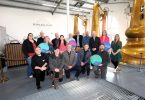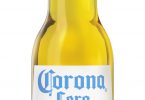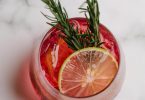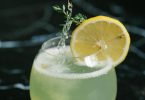Luigi Bosca 1 of Argentina’s top 3 premium brands
Argentinean wines are best-known for the Malbec grape which arrived from Bordeaux in 1865 and now flourishes there (unlike in Bordeaux itself, where it’s responsible for only 4-5% of grape growing today).
Despite this, Argentina can claim a number of similarities with Bordeaux.
For example Argentina’s wine-growing practices and climate are similar to those of Bordeaux, ideal for growing Malbec (which tends to give a more purple sheen to your glass of wine than, say, a Cab Sauv).
Just as in France, the Argentinean winemakers make good use of co-operatives to share the financial yoke.
There are differences too.
While the soil may be poor, Argentina enjoys twice the amount of sunshine found in Bordeaux!
With such a dry climate only 200mm of rain a year falls and since growing the grapes requires a minimum of 300mm to 370mm of water, irrigation plays a large part in viticulture there.
The run-off from the foothills of the Andes Mountains supplies the many wineries, all of which are concentrated in the west of Argentina, less than 200 kilometres from the Pacific Ocean.
Argentina’s place in the global wine export market is growing. From an export market worth less than €23 million ($25m) in the 1990s it grew to a figure of just under €900 million ($1bn in 2010) and wine exports have increased 375% in the last 11 years.
What had been mostly table wines have moved upmarket too, with a more meaty presence from the premium and super premium segments.
And keeping up with the trend towards sparkling wines, the country’s winemakers are now looking to the export their bubbly – the only fly in the ointment? They just don’t know what to call it!
Despite this increase in export value, to date 70% to 75% of wine produced in Argentina has been consumed locally and Luigi Bosca’s wines are one of the three main brands by volume and value consumed there in the premium/super premium bracket.
Having explained the background, Pablo Cúneo, Head Winemaker at Bodega Luigi Bosca, addressed a recent tasting lunch on behalf of Luigi Bosca’s importer and distributor Barry & Fitzwilliam in One Pico.
Luigi Bosca
Pablo has visited the major wine-producing regions across the world to achieve a global wine perspective and joined the Luigi Bosca company 18 months ago as new Head Winemaker, but the family-owned winery itself was begun in 1901.
In 2001 the winery celebrated its Centenary year with the launch of its ‘Gala’ range (‘gala’ means ‘celebration’ in Argentinean). Today, some 50% of Luigi Bosca wines are now exported via this ‘Gala’ range.
Gala 3 was launched in 2005 and the winery now concentrates on producing wines that can age for eight to 10 years ideally. It also seeks balance in its blends.
Today the 580 hectrare vineyards are being run by the fourth generation of the family. 100% of the grapes used in Luigi Bosca wines are grown by the winery itself while for its La Linda label, some 70% of the grapes emanate from Luigi Bosca with the rest being bought-in.
Based in the Mendoza region – which is mostly desert and where only about 3% of it can support viable agriculture – Luigi Bosca was the first Argentinean winery to launch Sauvignon Blanc onto the market there under its Reserva label in the 90s and now also produces Riesling.
In 1991 Luigi Bosca Malbec DOC was the first wine launched to the market under the DOC which had been established in 1989.
Pablo had stopped off in Dublin en route to ProWein 2019 with Bodega Luigi Bosca one of the exhibitors in Dusseldorf.
The Luigi Bosca, Gala and La Linda ranges are available from Barry & Fitzwilliam.








